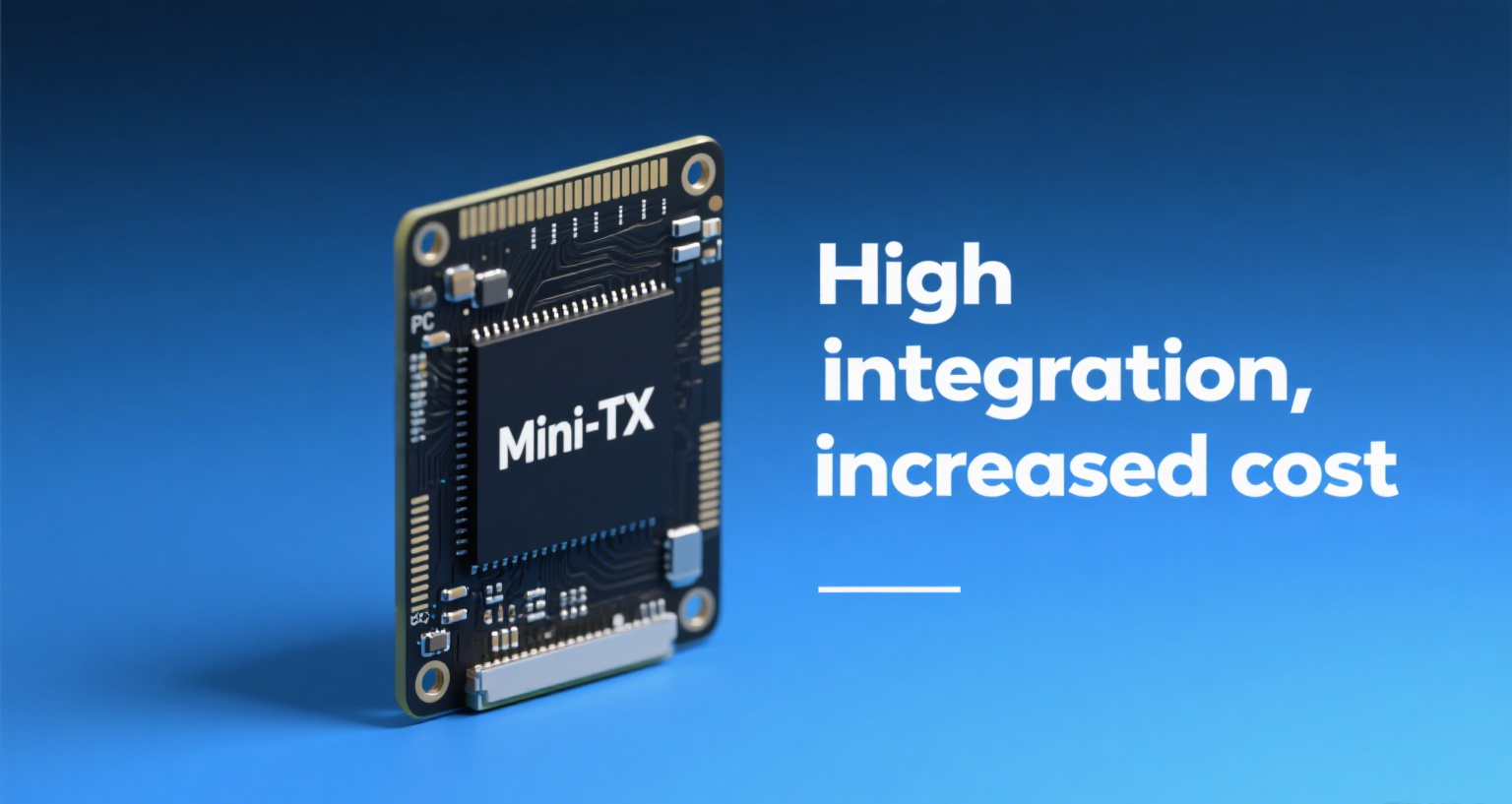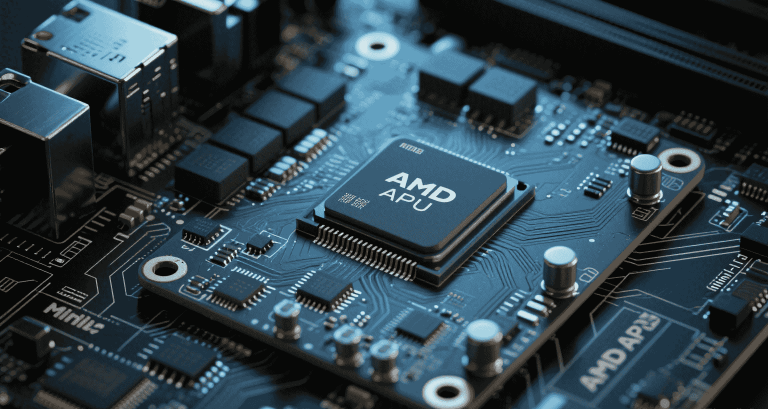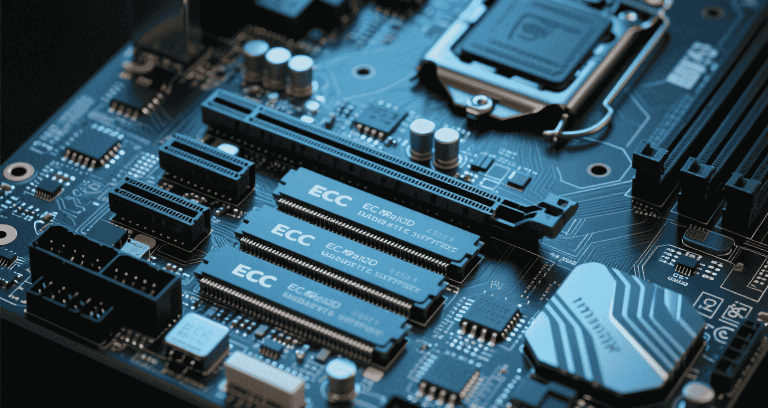Why Are Mini-ITX Motherboards So Expensive?

Table of Contents
- I. Intro: What’s a Mini-ITX Board?
- II. Why They Cost More: Main Reasons
- III. Why People Still Buy Them: The Benefits
- IV. The “Small Computer Tax”
- V. Conclusion: What We Learned & What’s Next
I. Intro: What’s a Mini-ITX Board?
When you build a computer, one of the most important parts is the motherboard. Think of it as the main circuit board that connects everything else: the brain (CPU), memory (RAM), and graphics card. Motherboards come in different sizes, and one of the smallest is called Mini-ITX, or mITX for short. These boards are tiny, only about 6.7 by 6.7 inches (17×17 cm).
People love mITX boards because they let you build really small computers. These are great for tiny desks, for building a PC to watch movies on your TV (called an HTPC), or for powerful computers that don’t take up much space. But here’s the catch: these small boards often cost a lot more than bigger ones. In this article, we’ll find out why these tiny tech wonders have such a big price tag.
—II. Why They Cost More: Main Reasons
Making a small computer board that works well is surprisingly harder and more expensive than making a big one. Here’s why:
Tricky Design & Development
Imagine trying to fit a whole kitchen into a tiny closet! That’s kind of what engineers do when they design mITX boards. They have to squeeze the CPU, memory slots, graphics card slot, and all the connection ports into a very small space. Every bit of room counts. This makes the layout process significantly more time-consuming and costly than for larger boards where components have more room to breathe.
When you pack so many parts close together, they get hot. So, engineers also have to figure out clever ways to keep the board cool, even in a small computer case. This requires a lot of smart thinking and testing, which costs money.
Also, these boards need many layers inside them (like a multi-layer cake) to connect all the tiny parts. More layers mean more materials and a harder, more expensive process to build them.
Sometimes, they even need special, smaller versions of electronic parts because regular ones are too big. These custom-made tiny parts are usually more expensive.
Harder to Make
Since the design is so complicated, making these boards is tricky. It’s like building a tiny, perfect model car compared to a regular one. The machines need to be super precise. This means sometimes things go wrong, and some boards don’t turn out perfect. When more boards are wasted, the good ones that can be sold become more expensive.
Also, not as many people buy mITX boards compared to bigger ones. Because less are made, companies can’t get big discounts on parts or production. Think of it like buying one cookie versus a whole box – the single cookie often costs more per cookie.
How They’re Sold & Who Buys Them
Mini-ITX boards aren’t for everyone. They’re for people who really want a small, powerful computer and are willing to pay extra for it. Since it’s a special product for a specific group, companies can charge more. It’s like buying a special edition toy; it costs more because it’s unique.
Also, fewer companies make these tiny boards. With less competition, there’s less pressure to lower prices.
Expensive Parts Inside
Even though the boards are small, they often have high-quality, expensive parts. This is because they need to perform well in a small space. They might have special power parts that are small but strong, or the latest Wi-Fi that’s built right in. These fancy built-in features add to the cost.
Here’s a quick look at how mITX boards compare:
| Motherboard Size | Typical Production Amount | Effect on Price |
|---|---|---|
| ATX (Biggest) | Lots of them (Millions) | Cheaper per board because so many are made |
| Micro-ATX (Medium) | Quite a few (Hundreds of Thousands) | Medium price |
| Mini-ITX (Smallest) | Not many (Tens of Thousands) | More expensive per board because fewer are made |
Note: These numbers are just guesses and can change a lot depending on the brand.
III. Why People Still Buy Them: The Benefits
Even with higher prices, many people choose Mini-ITX boards because they offer something unique that bigger boards can’t.
Their Cool Features
The main reason is their super small size. This means you can build a computer that fits almost anywhere. No more giant towers taking up all your desk space!
They also look really cool. You can build a very stylish and unique computer that stands out. It’s like having a custom-made gadget instead of something everyone else has. People who love building PCs enjoy making these tiny, powerful machines.
They’re also great for special uses. Like a small but strong computer for editing videos, a quiet media center for your TV, or a hidden computer for a smart home system.
Why People Don’t Mind Paying Extra
People who buy mITX boards often really want a small computer. For them, it’s not just about saving money; it’s about having a compact, good-looking, and powerful PC. They like the challenge and the final result of having a small but mighty machine.
They also expect these boards to have good features built-in, like fast internet or many USB ports, even in a small size. They see the extra cost as paying for the clever design and all the features packed into a tiny board.
IV. The “Small Computer Tax”
Beyond the actual costs of making the board, there’s also something we can call the “Small Form Factor (SFF) Tax.” This is like paying extra just for the benefit of having something super small, even if a bigger version could do the same job for less money.
Good Looks & Easy to Move
A neat, tiny computer that makes your desk look tidy or blends into your living room adds a lot of value for some people. This “looks” bonus is a big reason to pay more. Also, it’s super easy to move a small PC, whether you’re taking it to a friend’s house or just reorganizing your room. This portability is a huge plus.
Not Many Other Choices
If you really want a tiny computer, there aren’t as many mITX boards to choose from compared to bigger ones. This means less competition among companies, so they don’t have to lower their prices as much. It’s like buying a special item where only a few stores sell it – they can usually ask for more money.
Here’s how the market works for these small boards:
| What Matters | How it Affects Mini-ITX Price |
|---|---|
| Who Buys It | Special group of people who value small size and unique features. |
| Competition | Fewer companies making them means less price competition. |
| What You Get | Small size, good looks, easy to move, good for special computer projects. |
Note: The “SFF Tax” is a common way people in the industry describe this extra cost for small items.
—V. Conclusion: What We Learned & What’s Next
So, Mini-ITX motherboards are expensive for a few main reasons:
- They’re hard to design because everything has to fit in a tiny space.
- They’re tricky to make, leading to more waste and lower production numbers.
- They’re sold to a special group of buyers who are willing to pay more for their unique benefits.
- They often use more expensive, tiny parts to get good performance.
For people who love small computers, the extra cost is worth it. They’re paying for the clever design and the ability to have a powerful computer that fits anywhere. It’s an investment in a specific kind of computer setup.
In the future, maybe technology will get even better at making tiny parts, which could bring prices down a bit. And if more people start building small PCs, then more boards might be made, which could also help. But for now, Mini-ITX boards will likely stay a bit pricier because of how special and well-engineered they are.


